| |
|
|
|
Tinkers Bubble an Off-Grid community in Somerset, England.
|
|
| |
|
|
|
|
|
| |
|
This is the communal kitchen at Tinkers Bubble, a small
off-grid
hillside woodland
community on 40 acres (16 hectares) of land in rural Somerset,
England. The residents, known as Bubbleites, manage the
land without fossil fuels, and have been for the last twenty years
making a living mainly through forestry, apple products and gardening. As a result they say they are money poor but
happiness rich.
|
|
|
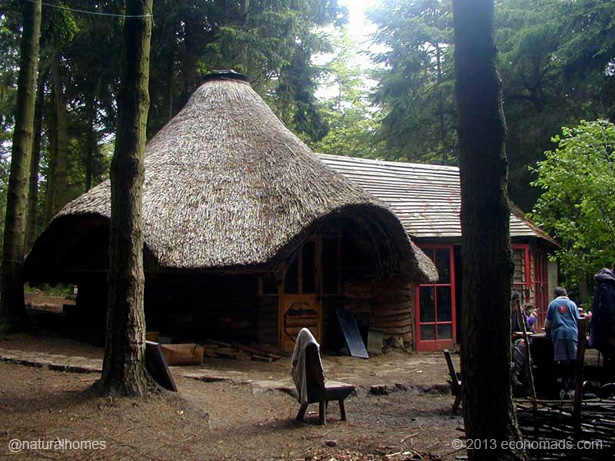 |
|
| |
|
|
|
|
|
| |
|
|
|
|
|
|
The name Tinkers Bubble comes from the spring that
flows through the woodland ending in a small waterfall by the
road. This is where gypsies brought their horses to water them at
the bubble; the gypsy name for a waterfall.
The home pictured right is Mary and Joe’s, a roundwood timber
frame with
lapped exterior walls and
thatched roof and repurposed windows. In the video right Mary
introduces their community and how they live together in Tinkers
Bubble
 . .
Living this way is not a picnic that you can cancel if the weather
is less than clement. There are always jobs to do come rain or
shine.
| |
Nature never quite goes along with us. She is somber
at weddings, sunny at funerals, and she frowns on ninety-nine out
of a hundred picnics.
Alexander Smith, 1829-67 |
|
The woodland provides the fuel for all their
cooking, space and water-heating. A wind-generator and solar
panels provide enough electricity for lighting, music and laptop
computers. This is true low-cost eco-housing using local free
natural materials.
|
|
|
|
|
|
|
|
|
|
|
|
Living in a woodland can be a damp
experience. Buildings can rot quickly, so many of the
homes have added protection from tarpaulins here and there. The
houses are compact; some might consider them too small, but
actually perfectly designed with space for a chair, desk, bed and
fire. Often the beds are on mezzanines high in the roof creating
fun sleeping platforms which free up living space below.
Pictured below (left), perched on the side of the hill is
Charlotte's house, a straw bale, cordwood, cob and pallet house
she built by herself without any pervious building experience. Inside
the house has a large living room with two sleeping platforms high in the
roof. The guest house (middle), is a larch timber-framed
two-storey building. The green painted house
(right) is Dan's home and workshop. The Bubble
also has a communal bath house, an asset few communities have. |
|
|
|
|
|
|
|
|
 |
|
 |
|
 |
|
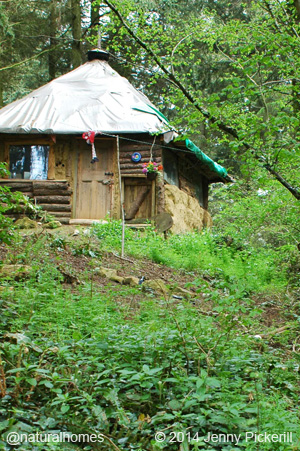 |
|
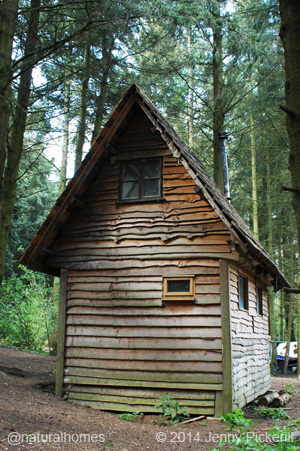 |
|
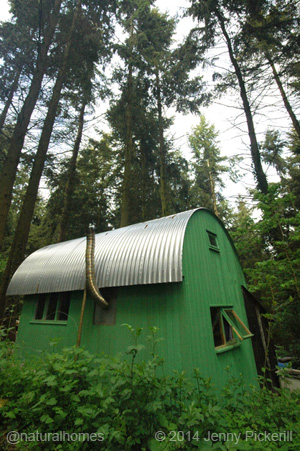 |
|
|
|
|
|
|
|
|
|
The residents manage around 28 acres of douglas fir, larch,
and mixed broadleaf woodland using horses, two person saws and a
wood-fired steam-powered sawmill. Their pastures, orchards and
gardens are organically certified. The gardens are at the bottom
of the hill, divided up amongst residents, with a communal garden,
horse and cow fields and orchard the other side of the woodland. They press apple juice for
sale, grow most of their own vegetables, keep chickens and
honey bees selling their produce (jam, chutney, pickles, cider
and wine) at local farmers markets. |
|
|
|
|
|
|
|
|
|
|
|
|
|
|
|
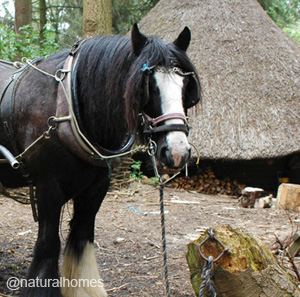 |
|
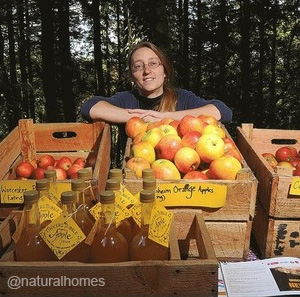 |
|
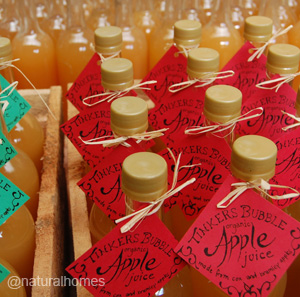 |
|
|
|
|
|
|
|
|
|
|
|
|